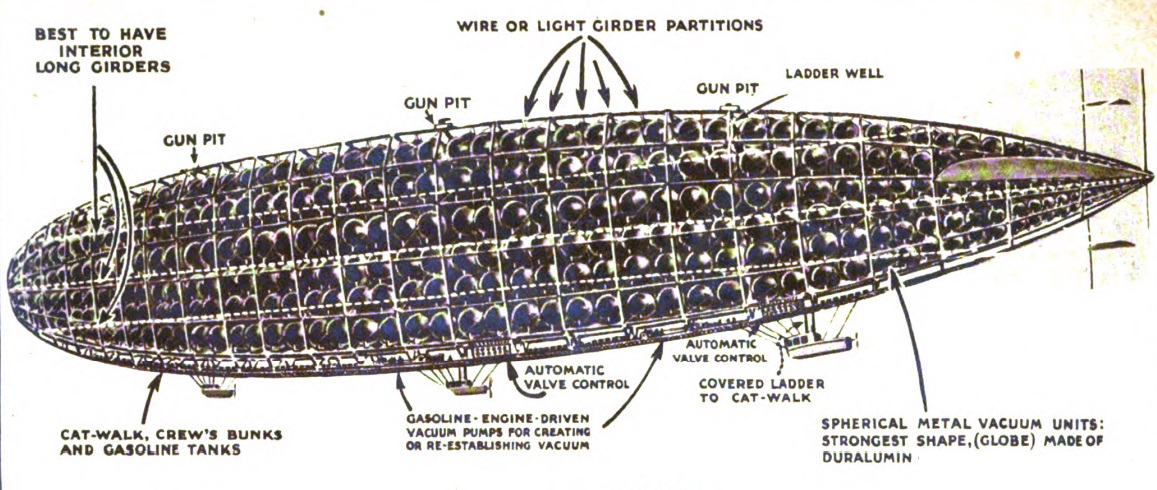 The November 1921 issue of Science & Invention contains an idea that I thought of independently. A lighter-than-aircraft relies upon the fact that a gas such as hydrogen or helium is lighter than air. But instead of filling the balloon with hydrogen or helium, you’ll get even more lift if you fill it with vacuum!
The November 1921 issue of Science & Invention contains an idea that I thought of independently. A lighter-than-aircraft relies upon the fact that a gas such as hydrogen or helium is lighter than air. But instead of filling the balloon with hydrogen or helium, you’ll get even more lift if you fill it with vacuum!
The idea had been proposed, and the article, penned by H. Winfield Secor was entitled, “Is the vacuum airship practical?” There was reportedly one under construction in Italy. Despite my having the idea, and despite the Italians trying to make one, I’ve never heard of such a thing, and Secor explains the probable reason:
Stop to think for a moment just what kind of construction will have to be employed in building compartments capable of being exhausted to almost a perfect vacuum. You will remember that our physics books taught us that unless a chamber is very strong, it would collapse, due to atmospheric pressure, when a perfect vacuum was produced. It would thus seem that after we have built an airship with compartments strong enough to withstand the outside atmospheric pressure when the air is pumped out of them, we can hardly expect the airship to rise, even if it only has to carry up its own frame.
Lo and behold, Wikipedia has an entry for vacuum airship, and the idea has been around since at least 1670. But undoubtedly for the reasons stated a century ago, the idea literally never got off the ground.
